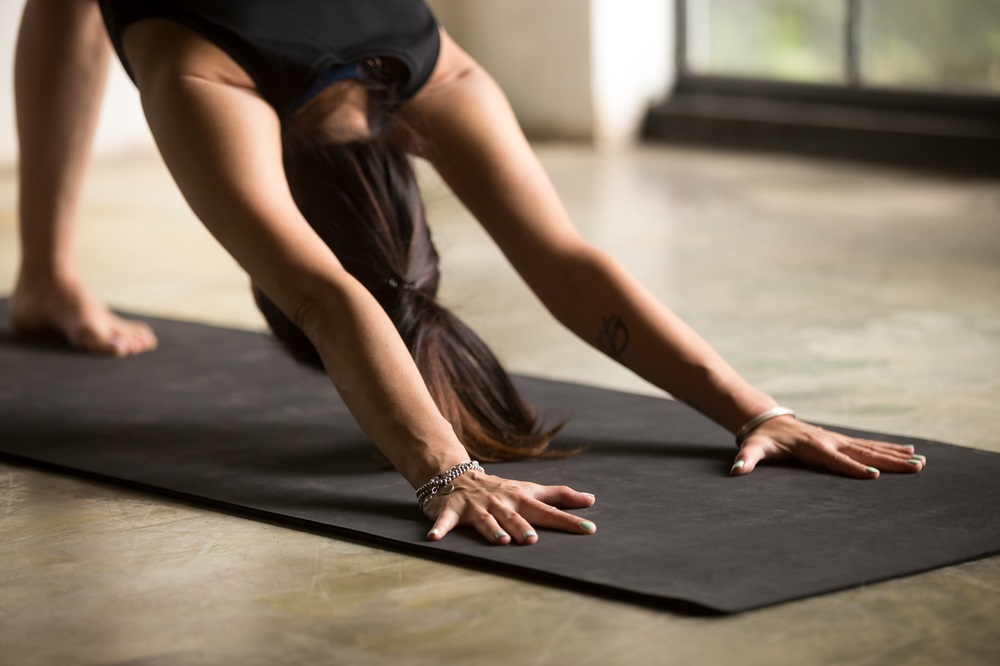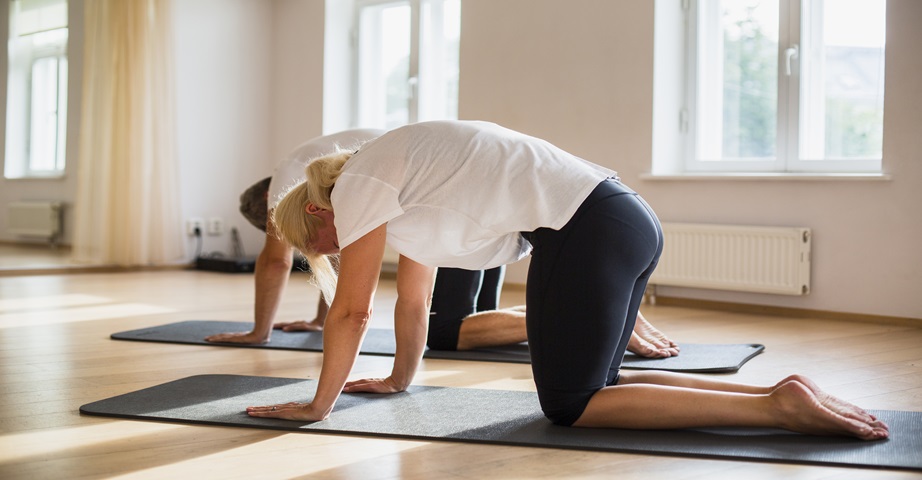Exercises for flexibility - how to perform stretching exercises?

Strength and endurance exercises are popular activities willingly performed by athletes. A little less interest of the players are exercises for flexibility, which are also an important element of shaping physical condition. Proper and regular stretching exercises can make it easier to achieve your intended sports goals, and can also be helpful in your daily life. What stretching exercises for the spine are worth practising? Are leg stretching exercises also important? How to perform stretching exercises for the chest?
Summary
What is flexibility?
Flexibility is the litheness of muscles and joints. This is the maximum range of motion that can be performed in individual joints.
Flexibility is a skill that every person has, but its scope depends on many factors, including age, gender, body structure, genetics, as well as body weight and level of training. The greatest flexibility is distinguished by children, while among adults, due to the anatomical structure, women have primacy. However, the flexibility can be worked out, and simple stretching exercises can be performed regardless of age or lifestyle.
Why is it worth doing stretching exercises?
Flexibility is an important element of motor skills, which affects not only physical training, but also everyday life and activities. Regular stretching exercises and paying attention to improving flexibility during physical activity can bring a number of benefits.
The increase in flexibility can help increase the range of motion and mobility of joints, and can also reduce the risk of injury. What's more, stretching exercises reduce muscle contractures and relax muscles, as well as make tendons and ligaments more elastic and stronger. Training flexibility allows increasing the dynamics of your movements and can help improve coordination, as well as positively affect muscle sensation and blood flow.
Recommended dietary supplements
Stretching exercises for beginners - types
Among the stretching exercises, can be distinguished static and dynamic activities.
Dynamic stretching, as the name suggests, involves performing intense, dynamic movements. Stretching individual muscles during the practice of this type of activity is short and is often used as a form of pre-workout warm-up.
Static stretching is a calm form of stretching, in which each exercise is performed slowly, taking into account the appropriate pause and stopping in a given position. Static exercises are often used after the end of training, and their regular practice can help increase the flexibility of muscles, tendons and fascia.
Basic stretching exercises - rules
Stretching exercises should be a permanent element of every workout - usually exercises for flexibility are performed at the end of physical exertion. However, stretching activities can be practised regardless of the training plan or treated as a separate training.
When deciding to perform stretching exercises, you should remember a few basic principles of proper stretching. Before you start training, you should warm up your body to increase the elasticity of tissues and reduce the risk of injuries during physical exertion. In addition, it is important to perform exercises for suppleness from top to bottom, starting from the muscles of the neck and ending with the muscles of the legs. It is also important to first perform exercises for large muscle parts, gradually moving to exercises focusing on small parts of the muscles.
Stretching exercises - how often to do?
Stretching exercises are worth doing after any physical activity, and flexibility training, which aims to improve muscle flexibility, is worth practising 2-3 times a week. Athletes for whom stretching and flexibility are key elements to achieve the desired results, exercise on flexibility should to do even more often to increase the range of joint mobility and support the regeneration of muscle tissue.

Back stretching exercises - exercises for stretching the spine
Stretching can be done both at home and in the training room or gym. Activities can be practised without additional equipment, as well as with the use of basic utensils and machines. What exercises for stretching the back are worth doing during flexibility training?
- Stand in straddle, straighten your back and lean your torso forward. Stay in this position for a few seconds and straighten your body. Repeat the exercise several times.
- In the four-point kneeling, set the hips in one of the lines with the knees. Try to make the wrists also in line with the shoulders, then take one hand off the ground and rotate the whole torso, pull it out as far as possible, towards the ceiling. Stay a few seconds in this figure and slowly return to the starting position. Repeat the exercise several times on each side.
- Lie on your stomach and support yourself on your hands while gently lifting your chest. Raise the head up, leave the legs on the ground still. Pull out the entire body, stop in this position for a few seconds, and then re-arrange the body on the ground.
- Spread your legs over the width of your hips and slowly lower your body down, leaving your hands and head freely. Move your hands close to your feet without bending your knees. Stay in this position for a while and return to the starting position.
- Sit cross-legged squat and straighten your back. Then lean the torso forward, extending your hands to the maximum in front of you. Stay in this position for a while and then return to the cross-legged squat.
Exercises for stretching the legs
Leg stretching exercises are particularly important among athletes who perform physical activities involving the lower muscle groups, for example among runners. During exercises for leg flexibility, you should focus primarily on the quadriceps and biceps of thigh muscles, as well as calf muscles.
As with back stretching, leg exercises can be done without the use of additional equipment or using available utensils and tools. Examples of stretching exercises for beginners can be as follows:
- Stand up straight, bend one leg and pull it to the torso. Keep your balance, straighten your back and gently push your hips forward. Stay in this position for several seconds, then do the exercise on the other leg. Repeat several times.
- Lie on your back, straighten your legs and place your hands along your torso. Bend the right leg, pull it to the abdomen, and then, holding the limb with your left hand, pull the leg towards the left side. Stay in this position for a while and return to the starting position. Repeat the exercise to the other side. Do it several times on each side.
- Stand up straight - straighten your back and legs. Bend your right leg at the knee, pulling your heel to your buttock. Hold your foot with your hand and catch your balance. Stay in this position for a few seconds and repeat the exercise on the other leg.
- Stand at the platform (for example, a small step). Leave the left leg on a flat ground, place the right foot on the platform in such a way that the heel is outside it. Bend your left leg slightly at the knee and lower your right heel down to feel the calf muscles stretching.
- Stand straight, then the right leg bent at the knee, put forward. Transfer the weight of the body to it and make pulsed movements, without pulling the left limb from the ground. Repeat the exercise to the other side.

